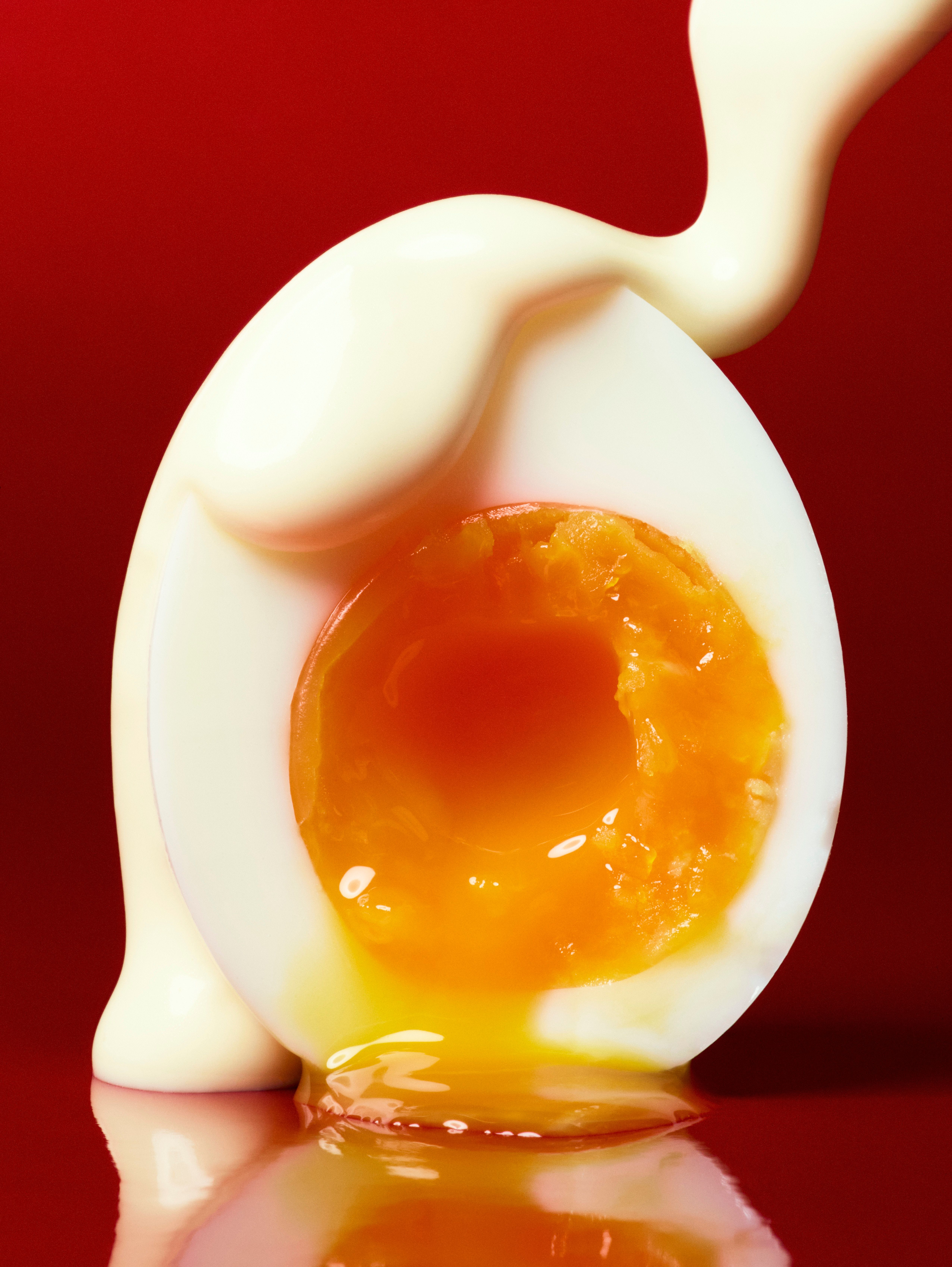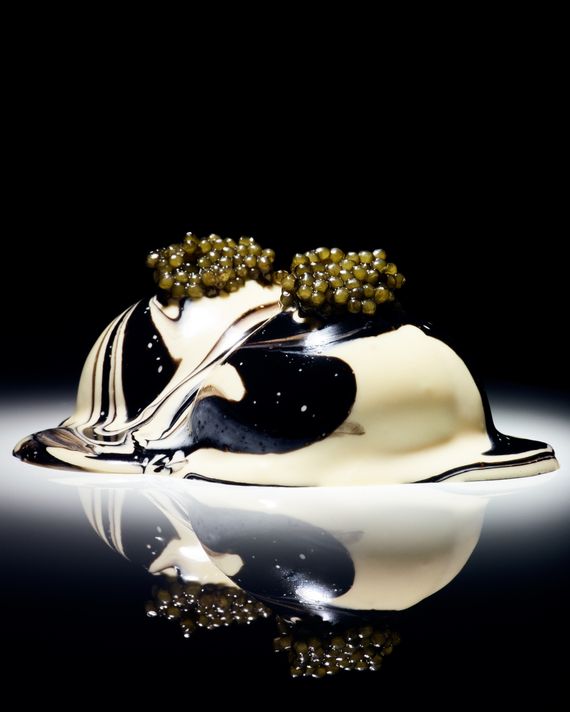when you want, where you want.
CJ Television
The Timeless Egg Dish Taking Over New York Menus
 Photo: Hugo Yu
Photo: Hugo YuThe most Instagrammed restaurant dish in the city is a $19 serving of two boiled eggs. They are halved and set face down before being blanketed with downy mayonnaise, a sprinkling of trout roe, and snips of chive. They are on the menu at the Far West Village brasserie Libertine, and they are not even the most opulent or expensive eggs in town. The Four Horsemen in Williamsburg serves a single egg, cut in half, on a bed of diced kohlrabi, cloaked in a marbled mixture of mayonnaise and squid ink, punctuated with small mounds of Osetra caviar. It costs $25.
Both dishes are revisionist oeufs mayonnaise, the old-fashioned bistro favorite that is, at its most economical, a one-bite, deconstructed deviled egg without the paprika. “It’s eggs on eggs,” says Jake Leiber, who runs Le Crocodile with co-chef Aidan O’Neal. “There’s something amazing about being able to make a dish with one ingredient.” Over the years, fans have bemoaned oeufs mayo’s struggle to make it big Stateside, but at this moment, a New Yorker on an egg hunt can order versions at not only Libertine, the Four Horsemen, and Le Crocodile but Le French Diner and Frenchette, too. Earlier this year at the Ha’s Đặc Biệt pop-up at Gem Wine, Sadie Mae Burns and Anthony Ha served a version topped with pork floss and fresh chiles. “Everyone’s oeufs mayo is different,” says Leiber. (Le Crocodile’s eggs — $12 for three halves — are marinated for several days in soy sauce and mirin and covered in mayo spiked with yuzu and cava-vinegar “mayonnaise chaud” that’s emulsified over gentle heat before chilling to serve.)
A cynic could interpret this recent eggsplosion as a way to pad menus with a high-margin assemblage of precooked eggs and pre-batched mayo. But for chefs, the retro standby has become an industry handshake and a challenge to make something interesting with a dowdy blueprint. “We’re trying to be creative; we’re trying to do something a little different,” says Four Horsemen chef Nick Curtola, who, along with his junior sous chef Dylan Takao, has offered a number of seasonal oeufs mayo incorporating ingredients such as fava beans, butternut squash, and charred leeks.
One factor working in oeufs mayo’s favor is that pretty much every version of the dish goes well with wine: “In the last ten years or so, there’s been a ton of wine-focused restaurants popping up,” Curtola points out. The dish “fits those early days of trying to mimic some of the neo-bistros in Paris, as well as some of the natural wine bars of the early 2010s.”
 Oeufs mayo with squid ink and caviar from the Four Horsemen.Photo: Hugo Yu
Oeufs mayo with squid ink and caviar from the Four Horsemen.Photo: Hugo YuIn France, those bistros are going through their own oeufs-mayo renaissance. In 2018, the Association de Sauvegarde de l’Oeuf Mayonnaise started hosting annual world championships for chefs who believe their oeuf mayo is the best. One winner from 2019, the €2.50 rendition from Bouillon Pigalle in Paris, went on to become the most-ordered delivery item in France. In the ensuing years, the championship has brought oeuf mayo to an international stage and fostered a friendly sense of competition among chefs who are trying to put their own stamp on the dish.
Libertine chef and partner Max Mackinnon tells me that oeuf mayo has been a permanent fixture on his menu since opening last year, in part because it’s something he orders any time he sees it on a menu. “For whatever reason, it’s caught on with different chefs,” he tells me. “It’s simple, but not always easy.”
The mayonnaise, like the eggs, is theoretically straightforward to make but offers room for flexibility, personalization, and obsession. Mackinnon insists on making the restaurant’s mayo himself. His recipe — anchored with garlic, Dijon, and Savagnin vinegar — gets thickened into a stiff emulsion before he whisks in cold water to loosen the mixture so it will drape elegantly over each egg. “It can look right when you do it, then when you go back half an hour later, it’s too set or too thick,” he says. “You have to find that balance and do it a lot to develop a feel for it.”
All Rights Reserved. Copyright , Central Coast Communications, Inc.